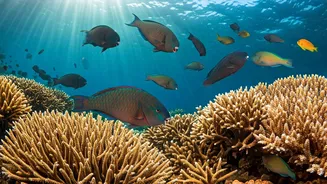Island Bird Wonders
Our planet is home to a vast array of unique bird species, with some of the most fascinating examples residing on islands. Islands often provide isolated
environments, allowing species to evolve in remarkable ways, leading to traits not found anywhere else. This article will focus on seven such species, each adapted to its specific island home and facing unique survival challenges. These birds exemplify the diversity of life on Earth and highlight the necessity of conservation efforts to protect their dwindling populations and habitats. We'll begin by exploring the Seychelles Magpie-Robin, a bird endemic to the Seychelles islands.
Seychelles Magpie-Robin
The Seychelles Magpie-Robin, a bird species found solely within the Seychelles archipelago, showcases the impacts of conservation. This bird, characterized by its striking black and white plumage, had a severely limited population, nearly succumbing to extinction in the 20th century. Habitat loss and the introduction of invasive species decimated their numbers. Dedicated conservation programs, including habitat restoration and predator control, significantly improved the situation. These interventions allowed the species to rebound, demonstrating the positive results of proactive conservation strategies and the resilience of nature when given a helping hand. The survival of the Seychelles Magpie-Robin underscores the importance of protecting island ecosystems.
Majestic Philippine Eagle
Moving to the Philippines, we meet the Philippine Eagle, a giant raptor and national bird. This eagle, one of the largest in the world, inhabits the rainforests of the Philippines. Its impressive size, sharp talons, and powerful beak are perfectly adapted for hunting. Sadly, the Philippine Eagle faces critical threats from habitat destruction due to deforestation and illegal hunting. Despite protection efforts and captive breeding programs, its population remains critically endangered. Its survival relies heavily on protecting remaining forest habitats and combating poaching. The conservation of this magnificent bird signifies a broader commitment to the preservation of the Philippines' biodiversity, recognizing the interconnectedness of species within its ecosystem.
Bermuda Petrel's Return
The Bermuda Petrel, or Cahow, is a remarkable success story in conservation. This seabird was thought extinct for over three centuries, making its rediscovery in 1951 a significant event. The Cahow, native to Bermuda, faces numerous threats, including habitat loss, predation by introduced species, and climate change. Dedicated conservation initiatives, including nest protection and habitat restoration, have aided its recovery. These efforts have slowly increased the Cahow's population, transforming it from the brink of extinction to a symbol of hope for conservation. This remarkable comeback demonstrates how careful management and concerted conservation action can rescue a species from the brink of oblivion.
Hawaii's Apapane Beauty
Next on our list is the Apapane, a vibrant honeycreeper found in the Hawaiian Islands. This bird, known for its bright red plumage, plays a crucial role in pollination and seed dispersal within the native forests. Its population faces threats such as habitat loss due to deforestation and the impact of invasive species like introduced plants. The Apapane's health is also affected by avian diseases spread by mosquitoes. Conservation efforts include habitat protection and restoration, as well as disease management strategies. Preserving the Apapane and its habitat ensures the health of Hawaii's unique ecosystem, reflecting a commitment to safeguarding the biodiversity of the Hawaiian Islands for future generations and preserving the delicate balance of the environment.
Kiwi: New Zealand's Symbol
New Zealand presents the Kiwi, a flightless bird emblematic of the country. This bird, adapted to a ground-dwelling lifestyle, has unique features, including strong legs, a long beak, and nostrils at the end of its beak for finding food. Kiwis face several threats, notably habitat destruction and predation from introduced mammals, such as stoats, cats, and dogs. Conservation programs focus on pest control and the establishment of protected areas. Successful initiatives have supported population growth, showcasing the importance of protecting key habitats and managing introduced species to ensure the Kiwi's survival. The Kiwi's fate is a test of conservation efforts in New Zealand and reflects the importance of protecting native species from external threats.
Kakapo: Nocturnal Parrot
Also from New Zealand, we find the Kakapo, the world's only flightless parrot. These birds are known for their nocturnal habits and are critically endangered. The Kakapo possesses unique features, including a nocturnal lifestyle and a reliance on a variety of plants for sustenance. The birds have been impacted by habitat loss and predation by introduced predators. Extensive conservation efforts include predator control, habitat restoration, and supplementary feeding. These programs play a critical role in increasing the population. The Kakapo's recovery exemplifies the dedication and comprehensive approach needed to save species facing extreme threats and highlights the success of dedicated conservation strategies in achieving positive outcomes.











